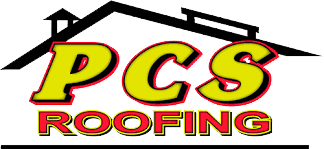What is a Green Roof System?
Industries worldwide are striving to be more environmentally conscious, and the roofing industry is joining the effort with alternatives such as green roofing. A green roof system consists of various plants and vegetation and can cover both residential and commercial roofs. The trend has been more popular in Europe. However, more North American homeowners, businesses, and cities in South Carolina are discovering the benefits.
The Benefits of a Green Roof
With homes, buildings, and warehouses filling our cities and towns more every day, natural green landscapes are becoming more scarce. Although the advantages of a green roof, also known as a living roof, may be evident in terms of sustainability and being eco-friendly, the benefits stem beyond that. Some of the key benefits of green roof systems include:
- Stormwater Management
The plants and substrates used help absorb and cleanse stormwater, acting as a natural filter. They also help reduce the amount of runoff overall.
- Limits “Urban Heat Island Effect”
Large cities often experience higher temperatures caused by having more paved surfaces, including asphalt roofing. The vegetation used in green roofing systems helps absorb the heat by absorbing light. The heat absorbed by plants also helps encourage the evaporation of water while reducing smog and greenhouse gas emissions.
- Reduction of Energy Costs
The layers of substrate and vegetation also act as an insulator, preventing heat loss in the winter, and since plants are absorbing heat, cooling in the summer. By moderating the temperature, it lowers the demand and costs for heating and air conditioning.
- Agriculture and Recreation Use
An accessible green roof is a perfect opportunity to increase recreational or agricultural green space in a city. From beautiful community gardens for growing organic food to rebuilding ecosystems and rebuilding bee populations – the possibilities are endless.
Types of Green Roofs
There are three main types of green roof systems, each with benefits and uses.
Extensive
This system is the more straightforward option, usually used for sustainability and environmental efforts. It’s intended to be low maintenance, making it ideal for large flat-roof buildings or low-sloped residential roofs. An extensive green roof is less than 6-inches deep and uses low-maintenance, shallow rooting vegetation like grass and herbs.
Intensive
This is the most advanced and highest maintenance green roof system. Ranging from 8 to 12-inches in-depth, these spaces can support deep-rooting vegetation such as large bushes and trees. They must be developed on flat commercial roofs but are great for recreational or agriculture uses such as community gardens, parks, and playgrounds.
Semi-Intensive
This is a combination of extensive and intensive green roof systems. They are generally between 6 and 10-inches deep and support herbs, grass, and shrubbery – but no deep-rooting trees. A semi-intensive green roof can be installed on either flat commercial or low-sloped residential roofs but not for recreational purposes.
Green Roof Anatomy
Each type of green roof comprises different layers of mediums and substrates, all performing a specific function to the system. The layers may differ in thickness or quality, depending on the type of green roof system, but the anatomy generally consists of the following layers:
- Vegetation and plants
- Growing medium (lightweight soil)
- Filter membrane
- Drainage layer
- Waterproof, root repellent
- Roofing membrane support
- Thermal insulation
- Vapor control
- Structural roof support
What is a green roof system? This blog is for informational purpose only for P.C.S. Roofing. We do not offer Green Roof Systems at this time but like to keep our clients informed on the roofing industry. 4/29/2021.
(article by: SEO After Coffee).
